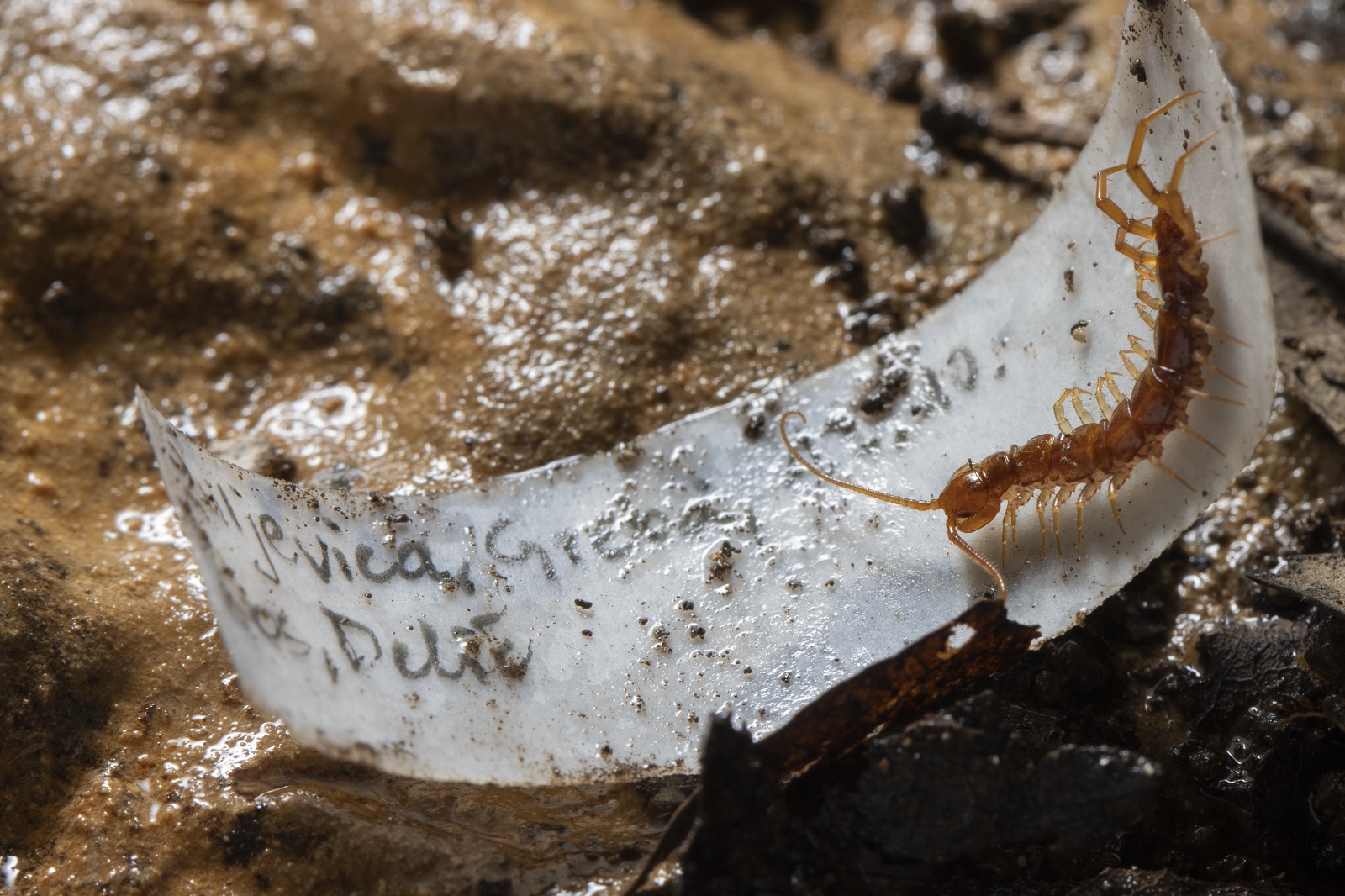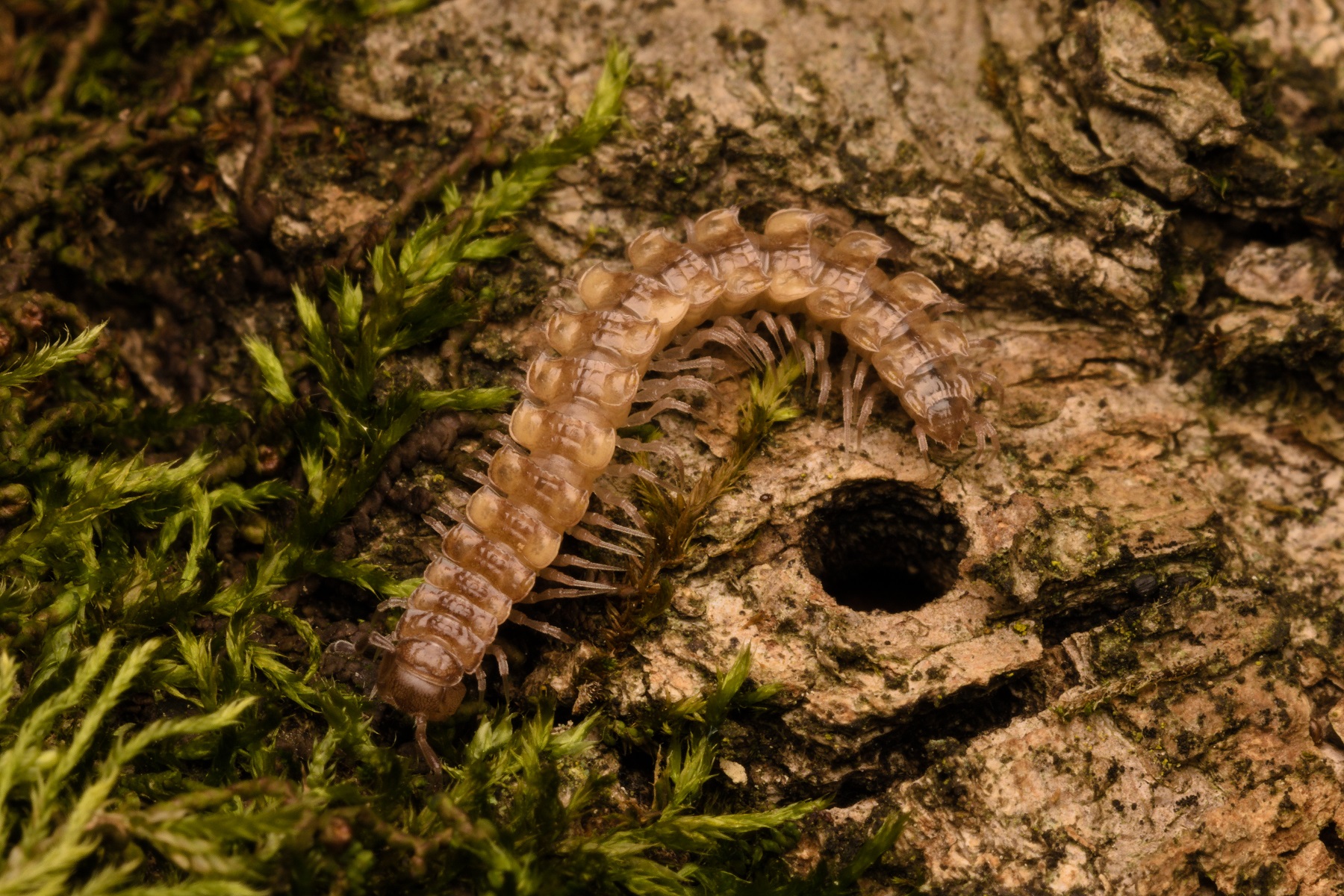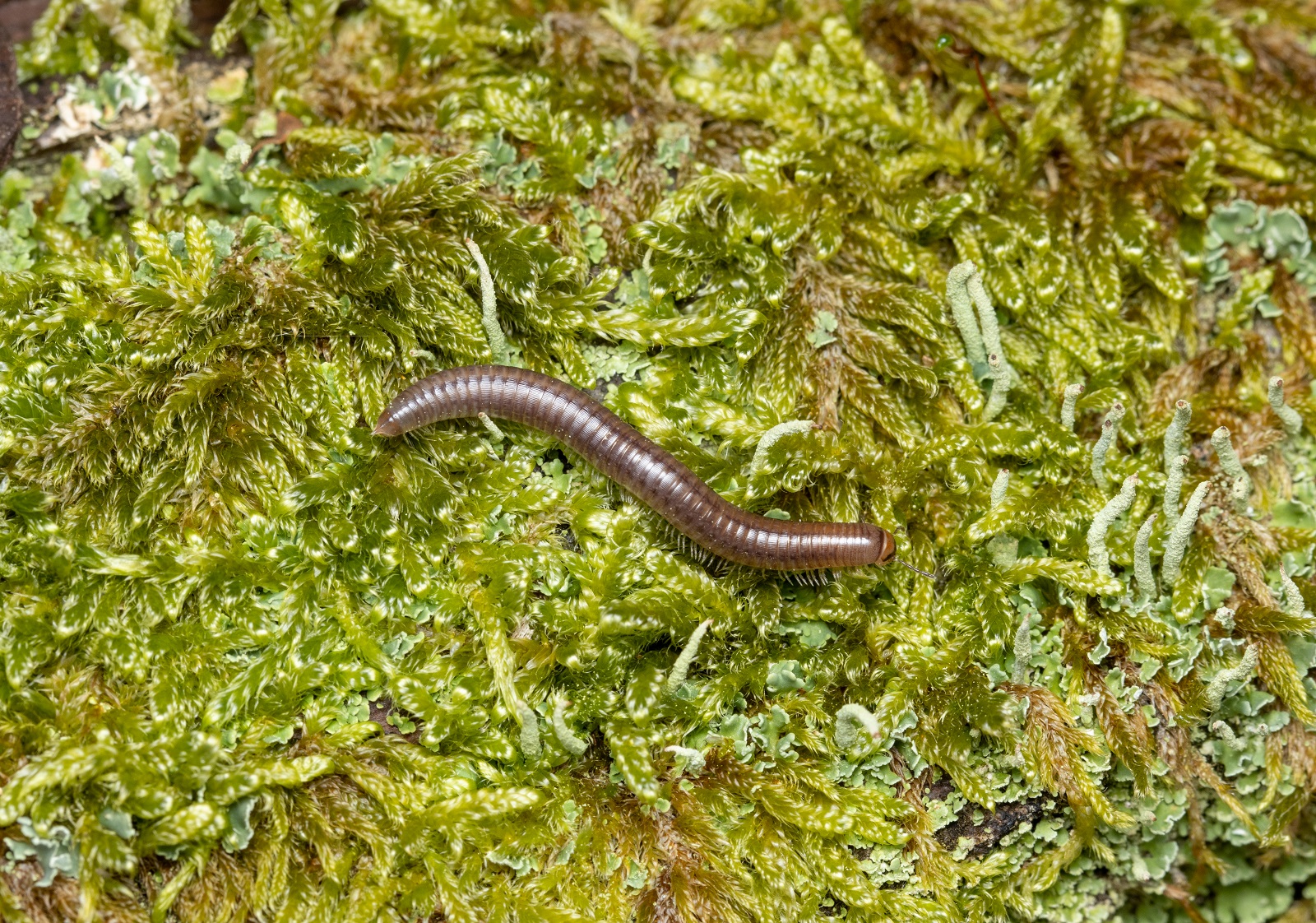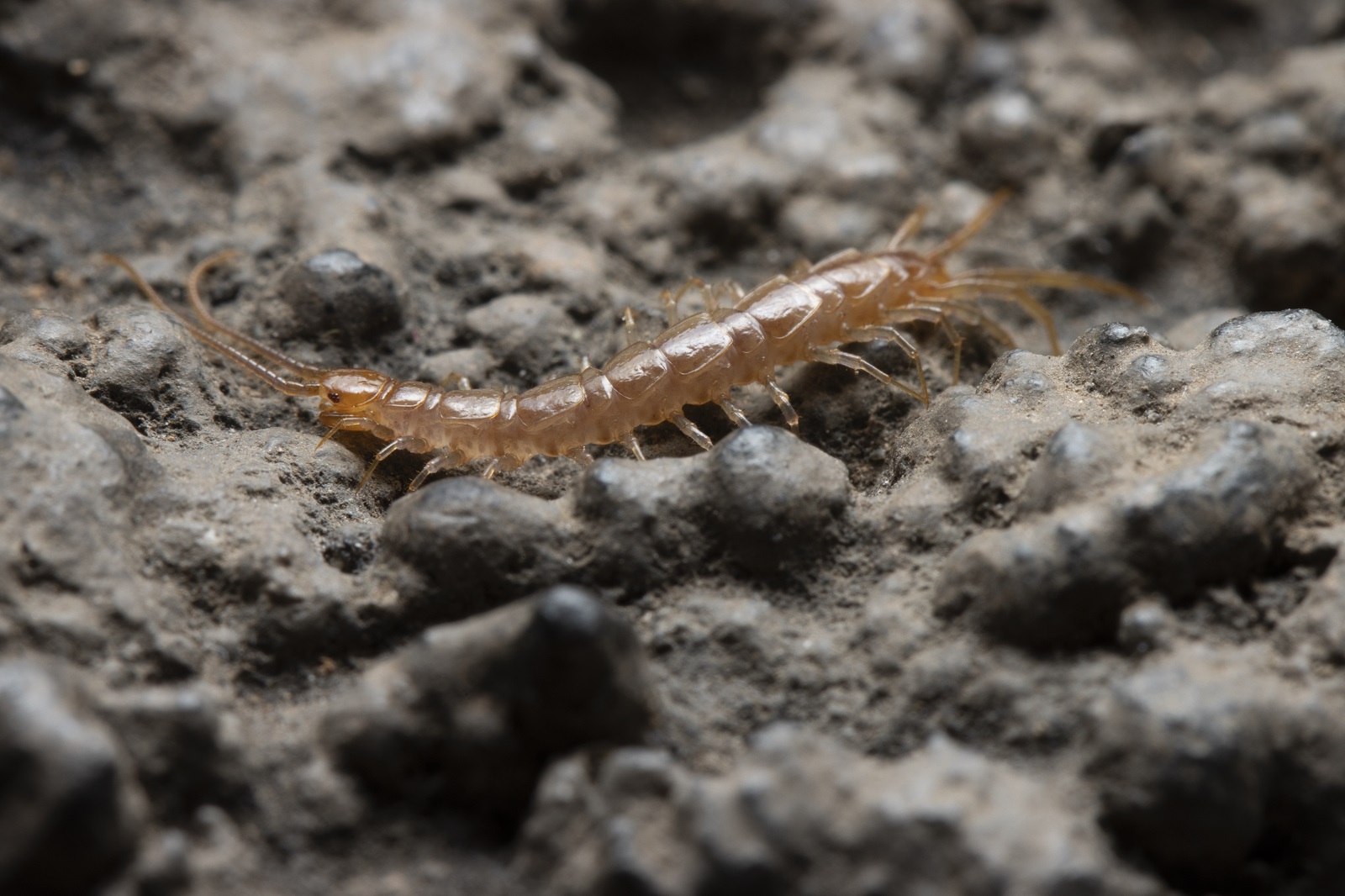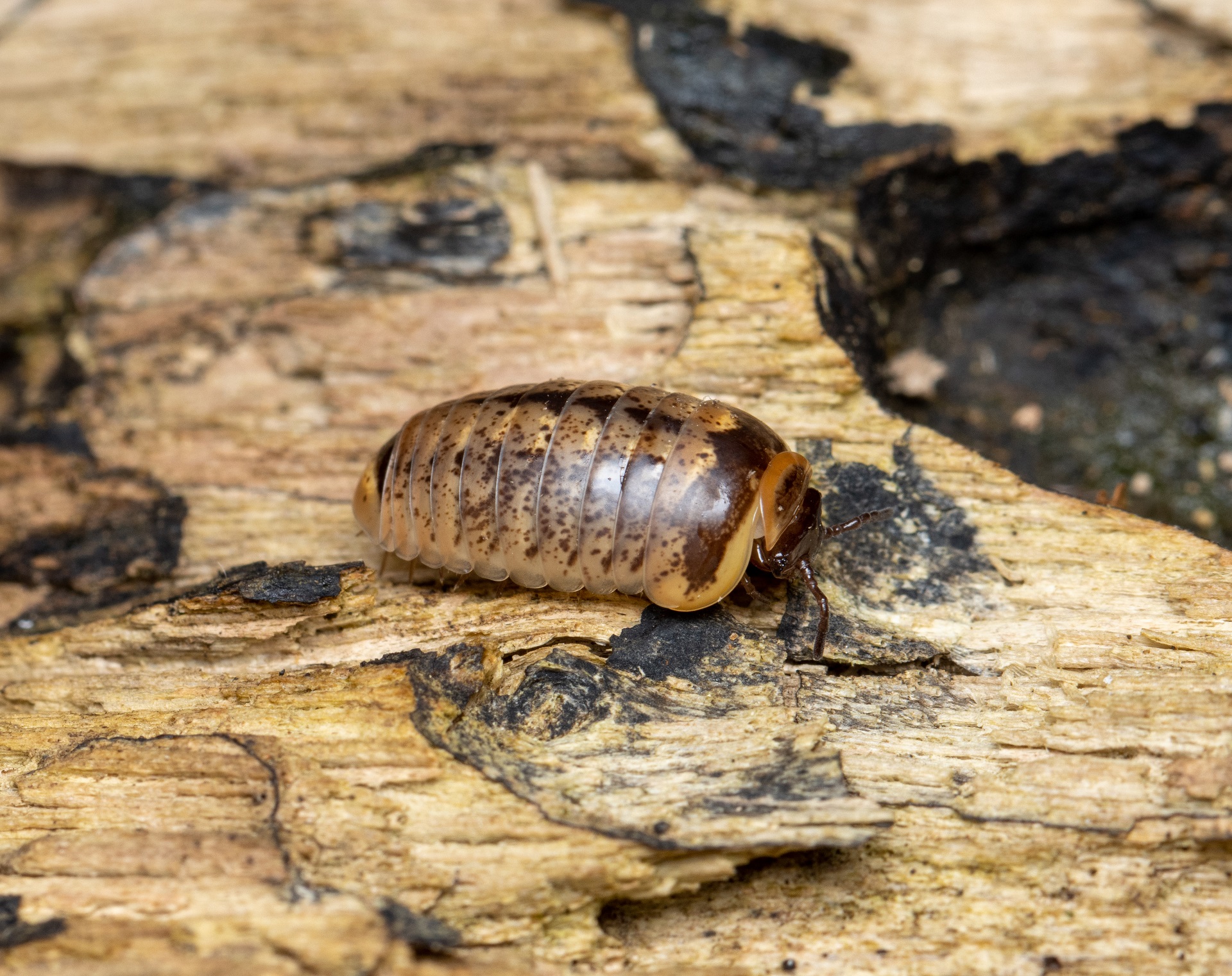- Myriapods
Polydesmida
The body of flat-backed millipedes consists of a head and an elongated trunk composed of numerous metameric segments with walking legs. In large species the body can be up to 130 mm long. The body is cylindrical with lateral keels on the tergites.
The head bears a pair of relatively long antennae and mouthparts which comprise a pair of large mandibles and a gnathochilarium, a large plate-like structure consisting of fused maxillae. The eyes are reduced.
The trunk is composed of 19-20 segments. The majority of segments are diplosomites, fused pairs of true segments, each bearing two pairs of legs which originate ventrally. The exception are the first three segments behind the head which are single segments. The adult females have 31 pairs of legs while the males have 30 pairs. In males the legs on the 7th segment are modified into gonopods which serve to transfer packets of spermatozoa termed spermatophores.
The flat-backed millipeds are encountered primarily in forests in leaf litter and in various other humid habitats such as moors and wet grasslands.
They are herbivores feeding on decaying plat material and are thus important decomposers. As a defense mechanism against predators, they can curl into a spiral and emit noxious and toxic secretions. Secretions of certain species contain cyanide. Flat-backed millipedes of the genus Motyxia, which are endemic to California, can secrete cyanide and have a bioluminescent exoskeleton which presumably serves as a warning signal.
Juvenile flat-backed millipedes hatch with only seven segments of the trunk. During their development they hatch seven times, each time adding new trunk segments until the final 20 segments in adults. The adults do not molt.
More photos
Related arthropods
Authors
- Urban Bogataj,
- Gregor Bračko,
- Teo Delič,
- Cene Fišer,
- Žiga Fišer,
- Rok Kostanjšek,
- Rudi Verovnik,
- Miloš Vittori,
- Valerija Zakšek.
Students Vito Ham, Vesna Jurjevič, Gaj Kušar, and Adrijan Samuel Stell Pičman also participated in the project.

